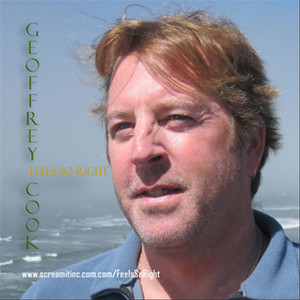
- 歌曲
- 时长
简介
I have worked over these 30 years in music industry as both a performing artist and studio musician. I have experienced working with professionals in a studio, meeting them for the first time, to touring with long time bandmates. Finally, I have been always writing and producing my own material in my own recording studio. In these travels I have come to an appreciation of both the positive aspects and also the challenges of collaborating with fellow musicians vs only working solo. They each have their merits and pitfalls. In this project, I wanted to try and use the benefits of both using technology and unique production techniques. I wanted to have complete artistic control (and no flakey musicians with attitude! Isn’t that every songwriter/producers goal?). I also wanted a “feel” to this album that you can normally only get when performing with other musicians. It is hard to outline exactly the procedure I used and it didn’t always go the same way, but it goes something like this: • After writing and documenting the new song, I record the performance live solo or “acapella” with my Yamaha Disklavier 8’ Grand Piano. (Disklavier is a feature added to special Yamaha pianos that not only give them “player piano” capability but also allows them to capture and record the exact performance). • I bring the recorded audio plus the captured MIDI performance (from the Disklavier feature) into my studio sequencer and map the template’s quantization grid to the piano MIDI performance. There might be 1,000+ tempo fluctuations that are tagged when building this grid. This is a long, laborious and technical step and I’m no longer in creative mode when doing this step (don’t even try to be creative). This tempo map forms the bases of the whole song. It becomes the “template”. • Going back into creative mode, I then play the drums to the piano performance and lock it to the quantization grid. This locks all the accelerando and sostenuto etc. tempo fluctuations together. • I do that same with the bass (or a keyboard bass patch). I might perform the bass before the drums depending on the song. This forms the basic “rhythm 3” (drums, bass, piano). • I go back and re perform the piano to the new drum/bass tracks. Then go back and redo the drums/bass to the new piano track. • I continue this process over and over until the song gets a “feel”. Sometimes this is nailed the first pass or sometimes I may redo an instrument performance many times – constantly rotating so that I’m playing to the latest performance which always changes how I then perform the new track. •During this iterative process, I’m also performing and inserting other instrument tracks like guitar, Uke, synths, etc. - injecting them into the “jam” as I track the original basic rhythm tracks themselves. I may also fly in percussive and other loops. Since there is a tempo map established from the original piano performance, any loops in REX or equivalent format will lock to the quantization map. (Listen to the very end of ‘My Piano’) •The vocals always come last and little flavors as needed – only if the song needs it. Generally, when performing as a group with other musicians, you have to “trust” the other musicians and over time the trust builds and is where you get that “gel” that happens between the players. The same is true with this production technique. I begin to trust my previous tracks as if they are individual musicians. This was a very fresh and exciting way to work by building trust with my own playing of the other instruments and can truly start to groove as if each part is played together. It was truly an amazing experience. One other important rule I set at the beginning of this project. This is divergent from my previous album projects. Normally I have a standard production quality I base everything off of. Each song must have a certain “polish” to it and I will continue to work on the song until it meets this minimum standard. In this project, being a more natural acoustic type of sound, I did not impose any minimum standard. As soon as I added something that I felt was not absolutely necessary, I would stop right there and the song was done. You will notice some songs are very sparse like ‘You’ or are very complex in production like ‘Sands of Time’. I let the song dictate when it is done rather than my own production biased standard.




